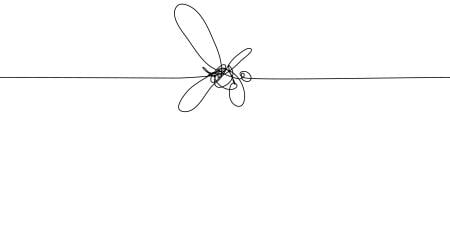Abstract
Two commentaries respond to a case. Each considers religious or cultural values that sometimes conflict with medical standards of practice or law. These conflicts frequently occur at the end of life when stress and tensions are high and, if not handled carefully, can escalate and cause tremendous pain.
Case
NK is a 32-year-old man who lost consciousness after having a severe headache. His wife, SK, called an ambulance. NK was intubated in the field by emergency medical technicians and brought to the hospital. NK’s admission cranial computed tomography (CT) scan showed subarachnoid hemorrhage1 and severe hydrocephalus with intraventricular hemorrhage. Twenty-four hours later, NK remains comatose with no brain stem reflexes.
Dr T explains to SK that NK is probably “brain dead.” SK responds, “We are Orthodox Jews,2 so we do not believe that death happens until the heart stops.” Dr T explains that the next step is to determine whether NK has any brain activity. SK agrees to allow Dr T to examine her husband and clarifies, “Regardless of what you find, my husband is alive until his heart stops,3 so we will continue to keep him on the machines until then.”
Dr T wonders how to respond.
Commentary 1
by Rabbi Jason Weiner, DBioethics
Religious or cultural values sometimes conflict with medical standards of practice or law. These conflicts frequently occur at the end of life when stress and tensions are high and, if not handled carefully, can escalate and cause tremendous pain. As the rabbi of a large medical center with a significant Orthodox Jewish population, I have frequently supported both Orthodox families and our medical staff’s attempts to sensitively navigate brain death diagnosis, which isn’t accepted as the definition of death by many Orthodox Jews.4 Although each situation is unique and must be handled on a case-by-case basis, by listening, engaging religious leadership, supporting hospital staff, and practicing cultural humility, clinicians can often identify a care plan for patients who are brain dead that is sensitive to both medical standards of practice and personal religious and cultural values.
Mitigating Conflict
Listen first. Regarding the case under discussion, I would encourage Dr T to start by listening carefully to the family, expressing empathy and respect for their outlook, and affirming that their perspective is important and that team members will try their best to accommodate it insofar as possible. The hospital’s reasonable accommodation policy should be reviewed (if it has one and, if not, one should be developed). The first goal must be to establish trust and a positive working relationship. Orthodox or not, everyone needs time to process such a shock. Furthermore, being treated with compassion by health care clinicians can be very beneficial,5 especially for people who find themselves in situations like the one in this case.6 Once the brain death testing, as well as confirmatory testing (which is often required by Jewish law7), is completed, more time will have passed—which hopefully will help the family to become more amenable to discussion—and the results of the testing might be relevant for helping the family and their rabbi determine next steps.
Involve religious leadership. If all testing confirms the brain death diagnosis, and if the family members remain adamant that they do not accept this as the definition of death and thus request ongoing mechanical support, then the next phase of care for the family begins. The family should continue to be listened to and shown compassion. Their rabbi, as well as supportive professionals within the hospital, such as a chaplain who is familiar with the religious needs of the Orthodox community, should be included in discussions.
It is crucial for medical practitioners to establish a collaborative, trusting relationship with the family’s rabbinic leadership. Within Orthodoxy, rabbinic leadership often plays a strong role in decision making due to the central role that Jewish law plays in all decision making (not just medical decision making). The hospital’s chaplaincy often has a relationship with local rabbinic leadership and can serve as an important liaison by helping to explain rabbinic rulings to the hospital staff and, conversely, the medical culture to the rabbinic leadership.
Support hospital staff. Some hospital staff members might become distressed by the prospect of continuing interventions for a body that they consider to be a corpse. They should receive emotional support, and some should be excused from caring for the patient if they are not comfortable doing so. In addition to being the right thing to do and preventing burnout, supporting staff can help mitigate potential escalation of conflict between frustrated health care clinicians and families.
Practice cultural humility. For those remaining on the care team, it becomes essential to reiterate the importance of cultural humility and the fact that defining life and death are philosophical concepts, not just medical criteria. Family members might not see the status of the patient in the same way that the medical team does, so insisting that they frame everything within the standard medical worldview will not only come across as disrespectful but also make effective communication impossible. A different worldview should not automatically render someone “difficult” or maladaptive. It is crucial also to remember that family members might still be shocked or experiencing severe anticipatory grief and are turning to their community and religion—as they do for all major decisions—as a source of guidance and support.
Coming to a compromise. Once a reasonable amount of time has been allowed—“reasonable” in my experience being a few days, as brain dead patients’ hearts often stop on their own after a few days though this sometimes takes longer, especially in younger patients—and the family has been shown compassion, understanding, and emotional support, if there is still no clinical change, institutional pressure to remove life-sustaining technologies might begin to build, as well as stress and anxiety. At this phase, we usually attempt to figure out a compromise approach as we move toward a resolution.
While decisions are made on a case-by-case basis, taking various crucial details into account, most rabbinic leaders are reasonable and can help find a workable approach. For example, while those who interpret Jewish law as not accepting neurological criteria for determining death will generally not permit active withdrawal of life support, they often permit withholding increased interventions. This exception is based partially on the distinction that Jewish law makes between “withholding” and “withdrawing.” Jewish law sometimes permits withholding life-prolonging interventions in dying patients since it is passive.8 However, Jewish law considers stopping therapy to be the performance of an action. Thus, while terminal extubation will rarely be permitted, there are times when rabbis will permit not adding any new medical interventions, not increasing vent settings in the face of pulmonary decline, or not engaging in chest compressions when the heart stops. Sometimes they will also allow some medications, eg, vasopressors, to run out and not be refilled. This approach, which can be very helpful, is sometimes referred to as do not escalate (DNE). DNE recognizes the desire not to actively hasten the demise of the body but also allows for the cessation of biological functioning to occur in a more natural way. This approach often allows families to feel less culpable in their loved one’s death and that they have maintained their integrity in adhering to Jewish law while caring for a family member.
Conclusion
If compassion, trust, and a positive working relationship have been established from the outset, conflict is much more likely to be mitigated than in situations when that relationship has not been developed. Respectful and compassionate interactions in cases such as this go a long way toward building strong relationships with the communities from which such patients come. This trust and mutual respect take time to build, and it is thus essential for medical leadership to give staff and families the time necessary to establish such rapport.
Commentary 2
By Rabbi Charles Sheer, MA, BCC
This case illustrates how culture or religion might countermand a physician’s diagnosis, even regarding death. In fact, SK’s refusal to accept death by neurological criteria (DNC) affects the entire health care institution. SK’s instruction to “keep him on the machines” affects nursing and other staff who suffer moral distress when assigned to care for what they might consider to be a cadaver. Her rejection also has substantial financial implications. Like most trauma patients, NK is in an intensive care unit (ICU). The steep tab for the room, physician and staff, medications, and so on is not medically mandated. The hospital cannot legally bill these costs and will probably have to absorb them. NK’s hospitalization entails a violation of the ethical principle of justice: the equitable distribution of resources and services.
A different worldview should not automatically render someone “difficult” or maladaptive.
Despite all of the above considerations, no hospital wishes to gain the reputation of being insensitive to the religious or cultural needs of its client community or of having refused to care for a patient. Given the impact a case such as the one described above might have on community relations, hospitals’ public affairs and legal departments often become involved. The nub of the issue is not science or the role of the physician. The challenge is whether a health care institution can remain true to its commitment to evidence-based practice while respecting patients’ right to allow their cultural values to play a determining role in their lives. This essay recommends the establishment of a special committee to address such challenges. Composed of individuals trained in conflict resolution and cultural competency, the committee would relieve clinical staff of cases that require special skills, language, and emotional openness. This special committee could bridge the gap between family and institution by its presence, experience, and skill.
Jewish Law and Death
Cultural competency, which emerged from the nursing profession,9 is now an established element of modern medicine. Most clinicians would know that when SK rejects DNC, she does so in accordance with a Jewish definition of death with a long pedigree. The sources that underlie that definition go back almost 2 millennia, and they are too extensive to present here.10 One classical talmudic case deals with a collapsed building under which a person is presumed to be buried. The rescuer is mandated to uncover the person’s body to ascertain whether the party is still alive.10 The texts and commentaries present various areas of the torso to be revealed: the heart, mid-section (stomach area), or the diaphragm. What emerges from these sources is that death is identified with the cessation of cardiopulmonary function. It is only in the last half-century, after the development of positive-pressure ventilation, that medicine identified a neurological cause of death. Although brain death is an accepted definition of death, it continues to be controversial on scientific as well as philosophical grounds.10,11
Since Jewish law is driven by textual precedent, the status of DNC has been a source of much dispute. Indeed, the “brain death debate” is arguably the most contentious and the most discussed topic in contemporary Jewish medical ethics.10 To complicate matters, the position on DNC within the Orthodox world has shifted in recent decades. For over 3 decades, the mainline Orthodox rabbinical organization, the Rabbinical Council of America (RCA), adhered to the decision of Rabbi Moshe Feinstein, as was stated on the RCA website: “In accord with the ruling of Harav Hagaon Moshe Feinstein … and of the chief rabbinate of Israel, brain stem death, together with other accepted neurological criteria, fully meets the standards of halacha [Jewish law] for determining death.”12 In 2010, the RCA rescinded its prior position on brain death and, in a 110-page study,13 enjoined each rabbi to resolve this decision individually on behalf of each inquirer.
Dr T’s conflict with the patient’s wife in our case is real, complex, and severely tests the mettle of the institution. Although a hospital might tout its commitment to cultural competency, cases such as this one can place an excessive burden on health care institutions. Absent clear directions from in-house policy, medical agencies, or government, many institutions handle such cases awkwardly.
Family Liaison Committee
I propose that institutions respond to DNC denial by convening, from the moment of its discovery, a forum for communication with the family that is serious, transparent, and ongoing, similar to disclosure and apology programs.14 When medical errors occur, the relationship between institution and family can be sustained even though the hospital was at fault. Specific actions, such as responding promptly after a medical error, issuing a sincere apology, and assuming responsibility, can effectively diffuse even contentious and litigious contexts.15 When such responses are put in place, the relationship between the family and the health care institution is maintained and the number of lawsuits is reduced.16 The research regarding medical errors attests that thoughtful management and communication are effective tools to foster good patient relations. I propose that hospitals appropriate these methods when confronted with DNC denial.
Hospitals should establish a family liaison committee (FLC) that would spring into action upon the request of the attending physician after a family objects to a DNC determination. Its members might include a physician, nurse, social worker or case manager, and chaplain, as appropriate. Its objectives would be as follows:
- To establish the FLC as the forum for communication with the family, including regular patient status updates and family meetings (to which the family rabbi might be invited);
- To explicate the clinical services to be provided, as determined with the attending physician;
- To define the time frame during which the patient can remain on the unit and receive the above-indicated services.
At the initial meeting, the FLC would review extant institutional protocols (if any) or established legal mandates. In states where some form of “reasonable accommodation” is mandated—New York, New Jersey, Illinois, and California17—the FLC would orchestrate the patient’s treatment accordingly. Thus, in New York State, where hospitals are required to have written policies defining “reasonable accommodation” for a patient’s or surrogate’s religious or moral objection to DNC,17 the FLC would explicate what the established arrangements are. Having a written document would enable the group to present what the hospital is prepared to do. The heavy lifting—at least, in terms of defining what will be extended to such a patient—has been done. In New Jersey, where a DNC cannot be determined on behalf of a patient who is known to reject DNC,18 the FLC would inform the family that, in accordance with state law and hospital policy, the clinical staff will not seek to determine DNC.
The FLC’s task entails a delicate balancing act. In one ethics committee consult on a case similar to that of NK, a colleague asked me, “What medical school did that rabbi get his degree from?” I understood her objection and what stimulated it. But I imagine a physician of this mindset would be challenged to negotiate empathetically and effectively with the family. Only when the FLC truly understands the cultural context of the family’s rejection of DNC and communicates transparently and consistently with the family can conflict and discord can be minimized.
Accommodating a Request for Time
The time frame is usually the most important and challenging issue. In the event that the family requests time for leave-taking or to enable a relative from outside the area to arrive, the accommodation period would be a day or two. Few hospitals are unwilling to make this accommodation. Families who object to DNC for religious reasons, however, tend to desire an open-ended delay19 because a termination of mechanical respiration is viewed as “pulling the plug.” Thus, in New Jersey, which has a large Hassidic population, the law sets no time limit for mechanical respiration after determination of DNC.
I do not think objective criteria can be defined for an “appropriate” time period that can be set. Once the hospital establishes its willingness to offer an accommodation, the FLC would be responsible to set the time period, considering such issues as the prior medical state of the patient, the suddenness of the patient’s traumatic event, and the patient’s age. A range of a few days to a week would demonstrate the hospital’s appreciation for the religious position of the patient. Respect for the cultural background of patients warrants a meaningful accommodation. One advantage of having an established committee is that it would develop experience in gauging what proposed time frames mean to families and communities who do not accept DNC. What was experienced as a “meaningful” response to a previous request for ongoing maintenance?
Communicating With Families
During its discussions with the family, the FLC should use language that is unambiguous. Dr T’s comment “that NK is probably brain dead” is not helpful. No family wants to be informed that its loved one is “probably” deceased. What Dr T should have said is that confirmatory testing needs to be done to establish the patient’s status.
Although the FLC should be respectful of the family’s religious position, it should use language that is consistent with the diagnosis. In general, the term brain death should not be used. It might imply to the patient’s family that the brain is not functioning, but the patient is alive. Such language gives a duplicitous message to the family.20 Similarly, referring to mechanical respiration as “life support” and using the term withdrawal of care implies that the patient is alive. References should be to the service rendered by the device (mechanical respiration) and not its alleged function (life support). All staff—especially nurses—should be coached to use terminology consistent with the hospital’s assignment of DNC status to the patient.
During initial meetings with the family, the FLC might introduce the possibility of a transfer either to a non-ICU floor (if medically possible) or to another institution. If the family wishes an open-ended accommodation, the hospital might present its acceptable time frame and, at the same time, offer to undertake a search to identify a receptive transfer institution. The hospital should play an active role, thereby demonstrating its commitment to the patient.
Possible Objections
One might counter that the attending physician, not an FLC, should determine any post-DNC service; after all, this person is responsible for the patient. I would agree with this objection in cases in which the attending physician or the family deem it vital that the former play a role on the FLC. Although I have argued that the hospital advances the treatment of the case with a predesignated team of individuals trained—and with the knowledge—to develop a service plan and to negotiate it with the family, the wishes of family and the physician should determine the process. Effectiveness is the primary objective of this proposal. If these principals wish to maintain the active role of the physician, so be it.
Another objection to this proposal is that an FLC could confuse families who already have difficulty understanding the role and standing of the diverse medical services involved in patient care. True, the attending physician, the department chair, or the nurse manager could play the negotiating role. However, the case of NK requires negotiating skills in an emotionally charged context and with the unusual objective of determining a plan that runs counter to what Dr T just ordered. Can Dr T shift on a dime, to now effectively work with the family to set in motion a plan that runs counter to the diagnosis? Is it prudent for the hospital to assign this complex task to an attending physician, without knowing his or her temperament and skills in such delicate negotiations?
What is most compelling about an FLC is that it brings a sense of gravitas to the negotiation with the family. When the FLC introduces itself as the hospital’s “official” response to a rejection of DNC, the implication is clear: the hospital deems this issue worthy of formal institutional treatment. The patient is crucial, and a special committee has been appointed to oversee the painful case. The FLC allows the attending physician to focus on the diagnosis, and if a family rejects the DNC determination, another group assumes the negotiation task on behalf of the institution. Its designation within the hospital system grants it special standing to develop a plan that, hopefully, will be adopted by the hospital—and the family—as the modus operandi.
References
-
Lantigua H, Ortega-Gutierrez S, Schmidt JM, et al. Subarachnoid hemorrhage: who dies, and why? Crit Care. 2015;19(1):309.
-
Son RG, Setta SM. Frequency of use of the religious exemption in New Jersey cases of determination of brain death. BMC Med Ethics. 2018;19(1):76.
- Johnson DO, Westphal CG. Addressing religious or cultural opposition to brain death diagnosis. J Hosp Palliat Nurs. 2018;20(3):252-259.
- Segal E. Religious objections to brain death. J Crit Care. 2014;29(5):875-877.
- Drossman DA, Ruddy J. Improving patient-provider relationships to improve health care. Clin Gastroenterol Hepatol. 2020;18(7):1417-1426.
- Matthews DA, Suchman AL, Branch WT. Making “connexions”: enhancing the therapeutic potential of patient-clinician relationships. Ann Intern Med. 1993;118(12):973-977.
-
Steinberg A. Ha-Refuah Ke-Halakhah. Vol 6:463-465.
-
Steinberg A. Encyclopedia of Jewish Medical Ethics. Vol. 3. Nanuet, NY: Feldheim Publishers; 2003.
-
Galanti GA. Caring for Patients From Different Cultures. 5th ed. Philadelphia, PA: University of Pennsylvania Press; 2014.
-
Sheer C. Torah u-madda and the brain death debate. In: Farber Z, ed. Halakhic Realities: Collected Essays on Brain Death. New Milford, CT: Koren Publishers Jerusalem; 2015:349-391.
- Truog RD. Brain death at fifty: exploring consensus, controversy, and contexts. Hasting Cent Rep. 2018;48(suppl 4):S2-S5.
-
Rabbinical Council of America. A Torah perspective regarding the health care proxy. 1991. Quoted in: Sheer C. Torah u-madda and the brain death debate. In: Farber Z, ed. Halakhic Realities: Collected Essays on Brain Death. New Milford, CT: Koren Publishers Jerusalem; 2015:349-391.
-
Bush A; Vaad Halacha, Rabbinical Council of America. Halachic Issues in the Determination of Death and in Organ Transplantation, Including an Evaluation of the Neurological “Brain Death” Standard. http://www.rabbis.org/pdfs/Halachi_%20Issues_the_Determination.pdf. Published June 2010. Accessed July 31, 2020.
- Duclos CW, Eichler M, Taylor L, et al. Patient perspectives of patient-provider communication after adverse events. Int J Qual Health Care. 2005;17(6):479-486.
- Robbennolt JK. Apologies and medical error. Clin Orthop Relat Res. 2009;467(2):376-382.
- Kachalia A, Kaufman SR, Boothman R, et al. Liability claims and costs before and after implementation of a medical error disclosure program. Ann Intern Med. 2010;153(4):213-221.
-
Biel S, Durrant J. Controversies in brain death declaration: legal and ethical implications in the ICU. Curr Treat Options Neurol. 2020;22(4):12.
-
NJ Rev Stat §26:6A (1991).
- Flamm AL, Smith ML, Mayer PA. Family members’ requests to extend physiologic support after declaration of brain death: a case series analysis and proposed guidelines for clinical management. J Clin Ethics. 2014;25(3):222-237.
- Jones AH, Dizon ZB, October TW. Investigation of public perception of brain death using the internet. Chest. 2018;154(2):286-292.



